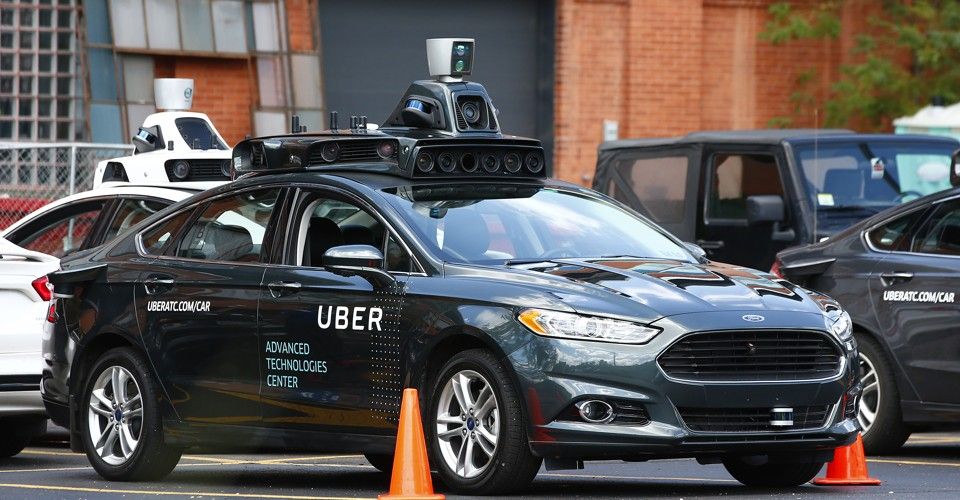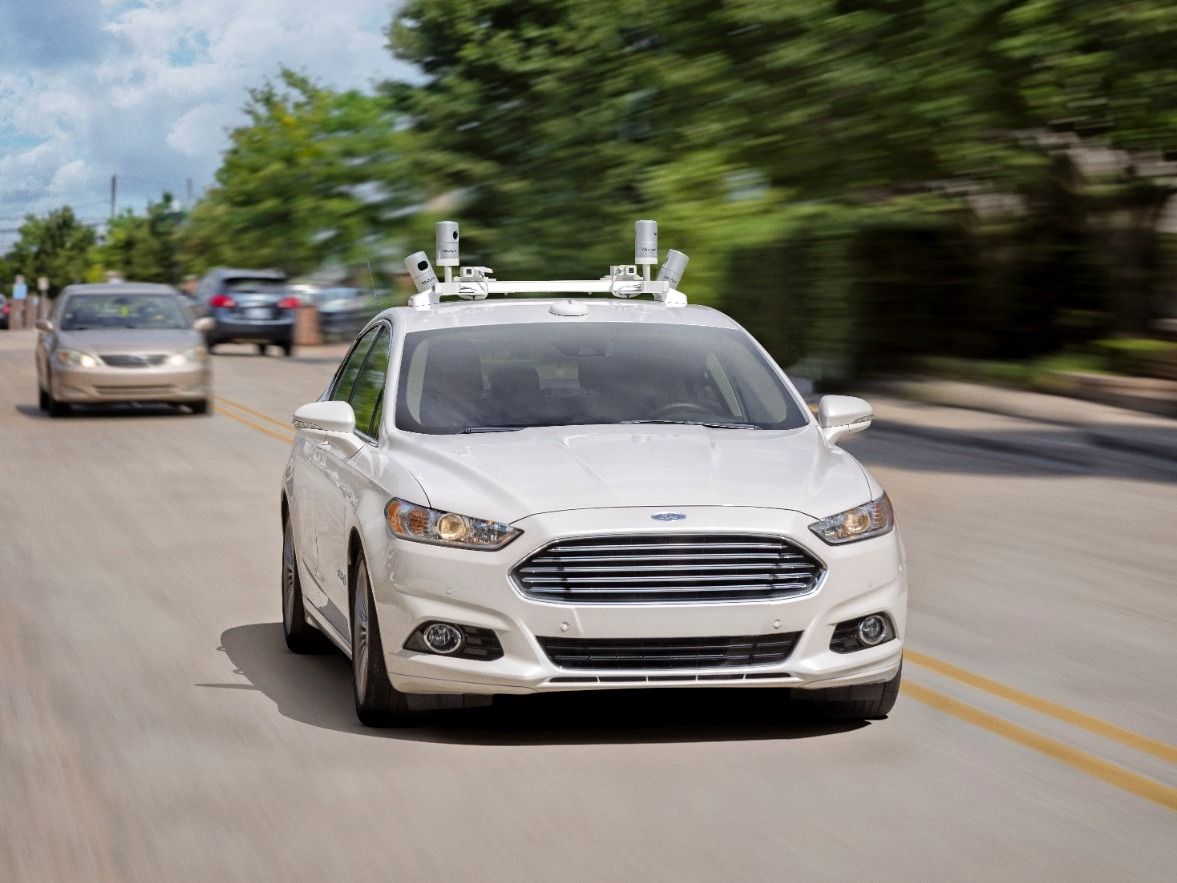Uber is revving up to add driverless cars to its fleet this month.
Category: transportation – Page 591

Will Uber’s Fleet of Self-Driving Cars Save Lives?
Researchers estimate that driverless cars could, by midcentury, reduce traffic fatalities by up to 90 percent. Which means that, using the number of fatalities in 2013 as a baseline, self-driving cars could save 29,447 lives a year. In the United States alone, that’s nearly 300,000 fatalities prevented over the course of a decade, and 1.5 million lives saved in a half-century. For context: Anti-smoking efforts saved 8 million lives in the United States over a 50-year period.
The life-saving estimates for driverless cars are on par with the efficacy of modern vaccines, which save 42,000 lives for each U.S. birth cohort, according to the Centers for Disease Control.
Globally, there are about 1.2 million traffic fatalities annually, according to the World Health Organization. Which means driverless cars are poised to save 10 million lives per decade—and 50 million lives around the world in half a century.

Maiden flight for world’s largest aircraft
Neat craft!
The world’s largest aircraft has taken to the skies for the first time in its new guise as the Airlander 10. On Wednesday afternoon local time, the airship from Hybrid Air Vehicles (HAV) made its short maiden voyage at a UK airfield, after a technical issue grounded a previous attempt on Sunday.

Exploring the promise of the quantum realm
Nice work; understanding the quantum effects in nanomechanical systems is closer to reality in being achieved. Imagine a nanobot or microbot with quantum mechanic properties.
Rob Knobel is probing the ultimate limits of nanomechanical systems to develop and build tiny vapour sensors, which could be used as airport security tools to prevent terrorism or drug smuggling.
He and his students are using highly specialized equipment in the $5-million Kingston Nano Fabrication Laboratory (KNFL), which opened a year ago in Innovation Park, to fabricate nanosensors made from graphene, a form of carbon a single atom thick.
“Graphene is the strongest, lightest material yet discovered, and it has remarkable electrical and mechanical properties. We’re developing graphene chemical sensors that can detect vapours in parts per billion or trillion concentration. These could potentially be used for detecting explosives or biological agents,” says Dr. Knobel, an associate professor, the Chair of Engineering Physics and a Queen’s Engineering graduate himself.

How Today’s Jungle of Artificial Intelligence Will Spawn Sentience
From time to time, the Singularity Hub editorial team unearths a gem from the archives and wants to share it all over again. It’s usually a piece that was popular back then and we think is still relevant now. This is one of those articles. It was originally published August 10, 2010. We hope you enjoy it!
You don’t have a flying car, jetpack, or ray gun, but this is still the future. How do I know? Because we’re all surrounded by artificial intelligence. I love when friends ask me when we’ll develop smart computers…because they’re usually holding one in their hands. Your phone calls are routed with artificial intelligence.
Every time you use a search engine you’re taking advantage of data collected by ‘smart’ algorithms. When you call the bank and talk to an automated voice you are probably talking to an AI…just a very annoying one. Our world is full of these limited AI programs which we classify as “weak” or “narrow” or “applied.”

China begins operating bullet trains at 350 kmph speed
Its super train.
Beijing: China on Monday began operating its indigenously designed bullet trains which can clock 350 kmph speed, the country’s first passenger train using Electric Multiple Units technology.
The China Railway Corporation announced that Train No G8041 departed from Dalian for Shenyang, capital of northeast China’s Liaoning.
It is the first passenger service using China Standard Electric Multiple Units (EMU) trains, Zhou Li, head of technological management at the China Railway Corporation, the national rail operator, said.

Ford to ship self-driving cars without steering wheels, brake or gas pedals by 2021
Ford says it’s going to deliver self-driving cars by 2021 – and these will ship in volume, and will also lack steering wheels, brake or gas pedals, offering full Level 4 self-driving features which don’t require a human driver at all, the company announced at a press conference in Palo Alto today.
The car maker says that it has held off making any announcements about when to deliver self-driving vehicles until now because it isn’t in a race to make announcements. But it did say it is making self-driving vehicle deployment a priority, because of the advantages it offers in terms of customer experience and passenger safety.

Four Sets of Identical Twins Staged a Time Travel Prank on an NYC Subway
Most NYC subway riders are pretty blasé when panhandlers hit them up for cash between stations. When a panhandler announced he was collecting funds to build a time machine, riders chuckled at the odd request—until another man boarded the train and announced he was the inventor’s future self. He implored them not to give any money because time travel will ruin everything.
It sounds just like that X-Files episode (“Synchrony”) where a scientist travels from the future to stop his younger self from making the cryobiological compound that will one day enable time travel. But it’s actually an elaborate prank by Improv Everywhere:
For our latest mission, we staged an elaborate time travel prank on a New York City subway car with four sets of identical twins. A man enters a subway car and announces he is raising money to complete his time machine. At the next stop, his future self enters to try to talk him out of it. More and more time travelers convene on the subway car as the train rolls along, surprising the random commuters caught up in the middle.

Facebook’s 10-Year Plan: Connectivity, Artificial Intelligence, And Virtual Reality
Earlier this year at Facebook’s F8 conference, the company revealed three innovation pillars that make up the company’s ten-year vision: connectivity, artificial intelligence (AI), and virtual reality (VR). Facebook’s Chief Technology Officer Mike Schroepfer is responsible for leading each of them. Despite the fact that the vision is ten-years in duration, the company has made significant progress in each.
Facebook’s progress in AI can been seen in everything from the company’s news feed to the way in which people are tagged. The virtual reality innovations are best demonstrated through the Oculus Rift, which I demo’d last Thursday. More recently, the company made a great flight forward on the connectivity pillar as Acquila, a long-endurance plane that will fly above commercial aircraft and the weather, took flight in Arizona. The goal is for this v-shaped aircraft that has a wingspan longer than a Boeing 737, but weighs under 1,o00 pounds to bring basic internet access to the developing world.
I met with Schroepfer at Facebook’s headquarters in Menlo Park, and we discussed these three pillars and a variety of other topics, including the company’s recruiting methods, how the company maintains its innovative edge, and the logic behind its headquarters — one of the largest open-space offices in the world.

Google is developing an OS called “Fuchsia,” runs on All the Things
Every single operating system developed by Google to date has one thing in common: they’re based on the Linux kernel. Chrome OS, Android, Chromecasts, you name it. Linux has powered Google hardware for years.
However, the Linux kernel is not ideal for every situation. Especially in the case of embedded devices like car dashboards or GPS units, full-blown desktop kernels like Linux impact performance and cause other issues. There’s a massive ecosystem of operating systems designed for embedded hardware, and Google may be working on their own.
Enter “Fuchsia.” Google’s own description for it on the project’s GitHub page is simply, “Pink + Purple == Fuchsia (a new Operating System)”. Not very revealing, is it? When you begin to dig deeper into Fuchsia’s documentation, everything starts to make a little more sense.